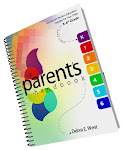What's 3rd Grade Reading Level? Part 2
I want to continue on the topic of how important it is for a third grader to be successful in reading. Early intervention will make all the difference in the world for your child. Yesterday was the first part of the artilce by Andrew Phelps about "What a 3rd grade student's reading level should be. The second part of the article is below.
Hubbub Explainer: What's 3rd Grade Reading Level?
By Andrew Phelps
Jun 10, 2010, 6:23 PM Updated 9/22/10
One of these kids will probably graduate high school on time. The other may not. Can you guess which one will succeed?
How Is Readable Defined? What’s A “Third-Grade Reading Level?”
I called Bill Dubay, a man who has studied and written about readability for years. It turns out you can reduce any literary passage to a few mathematical formulas. The most famous is the Flesch-Kincaid readability test.
Rudolf Flesch was an Austrian immigrant who learned English as a second language. He was frustrated by the unnecessary complexity of English — in newspapers, textbooks, insurance policies, you name it.
Flesch devoted his professional life to campaigning for simpler, more readable language. His most celebrated book is “Why Johnny Can’t Read (And What You Can Do About It).”
In the midcentury, Flesch discovered that the average number of words per sentence, plus the average number of syllables per word, plus a bit of arithmetic, generates a number that equates to an elementary school grade level. And it’s wicked accurate.
(0.39 x Average Sentence Length) + (11.8 x Average Syllables Per Word) – 15.59
Try it on your own writing — it’s built into Microsoft Word (here’s how to do it).
1. Dubay says a more accurate (but less popular) method involves even less math: the Dale-Chall formula, which compares a text against a list of words that are simple and familiar to most fourth graders. The more familiar words, the easier the text is to read. (The original list contained about 1,000 words; it has been expanded and updated.)
2. The third well-respected gauge of readability is the Gunning fog index, which you can calculate on scratch paper (updated, thanks Bill):
3. Take 100 continuous words from a passage.
4. Grade level = 0.4 x (average sentence length in words + number of hard words)
5. Where hard words = all words in the sample of three or more syllables
Amazingly, all three of these methods are more than 60 years old, and despite modest improvements, they remain the gold standards for measuring readability.
Of course, if you’re writing a text for a third grader and those numbers come back too high, you can’t just slash syllables and add in monosyllabic words. It won’t work. That’s why, Dubay says, it’s much harder to make something readable than to figure out how readable something is.










1 comments:
I think if children are not doing well by 3rd grade (year 3 I think in UK?) then they are aware of it, get embarrassed and start to hide that they cannot read. Early intervention is a must. Schools need to work with the parents/guardians to ensure that children are given as much help as possible to help them with reading.
Post a Comment